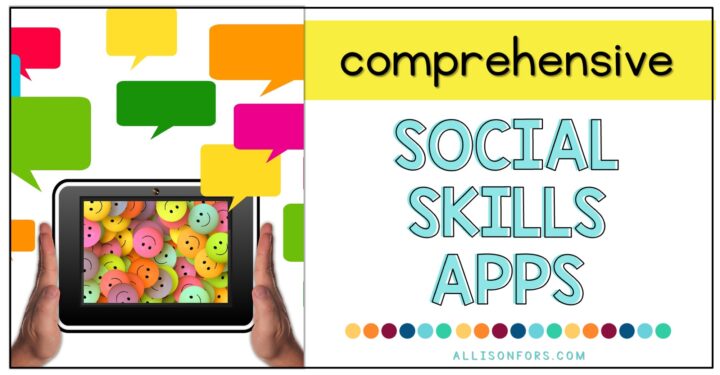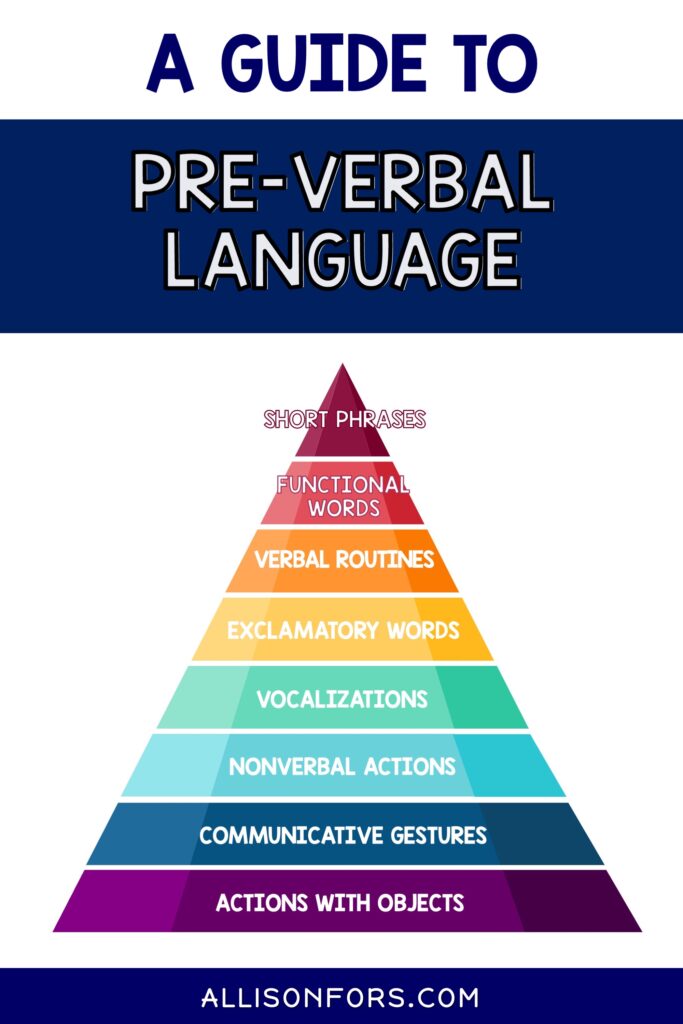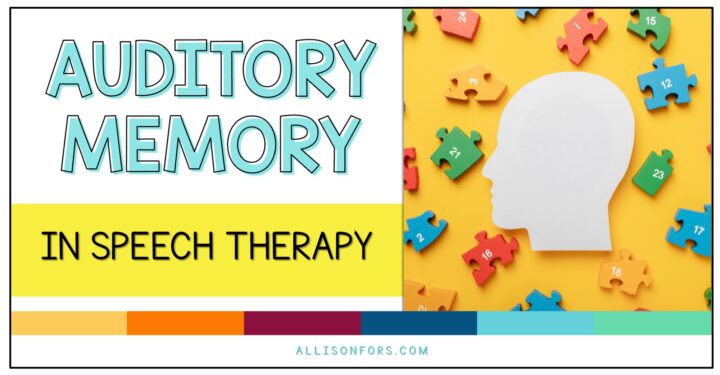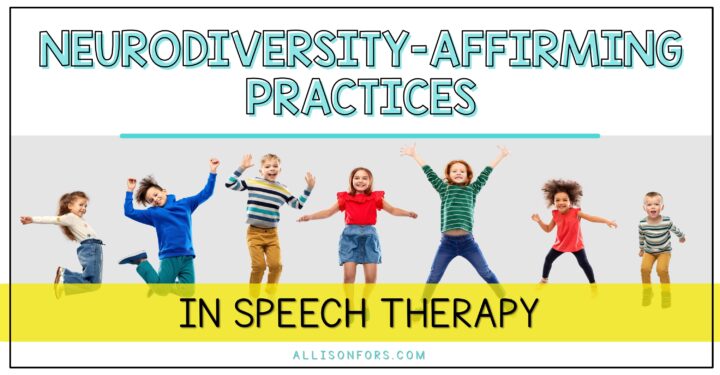
A Guide to Pre-Verbal Language Development

Did you know there are steps prior to verbal language?
Language development doesn’t begin at first words but much, much earlier! If a child is not yet talking, I first try to see if they will imitate actions by clapping or repeating my actions with a simple cause-and-effect toy!
Imitating actions comes before imitating words.
Many parents think their child is in speech therapy to learn to talk. So if you are working on imitating movements or teaching signs, explain WHY.
This graphic showing pre-verbal language skills is helpful in explaining precursor stages for many children. Parent involvement and carryover at home are critical for this stage. Not only will parents and caregivers have a better understanding and be more confident in what you are doing. But they will be more likely to practice these skills at home if they understand why we do what we do in therapy.
Feel free to download and use this graphic as a handout or explain pre-verbal steps!

1. Imitates actions with objects
This is where cause-and-effect toys are amazing! Read my favorites here. This is also something you can do with any objects you have:
- Turn the light on and off with the light switch or flashlight.
- Turn the water faucet on and off.
- Shake a rattle or bell.
- Have a big reaction or mimic the child’s faces, noises, and movements.
- Pull a toy or blanket as you walk. Watch how it follows behind you.
2. Imitates communicative gestures
Gestures include waving, pointing, clapping, playing peek-a-boo, etc.
3. Imitates nonverbal actions with face and mouth
Nonverbal actions with facial expressions could be copying open/close mouth, sticking out tongue, doing a surprised face.
4. Imitates vocalizations
Early vocalizations can be things like imitating sneezing and coughing – which can be quite motivating and fun! They can also be animals noises or blowing raspberries.
5. Imitates exclamatory words
Exclamatories include: “uh oh”, “ow”, “oops”, “vroom”, “wow”, “yay”
6. Verbal routines
Verbal routines refer to repetitive language use patterns used in communication. Anything can become a verbal routine. Some common examples include: “ready, set, go”, songs, “my turn, your turn”.
7. Imitates functional single words
8. Imitates short phrases
Source: Mize, L. (2012). Teach Me To Talk: Building Verbal Imitation in Toddlers
A NOTE ABOUT THE GRAPHIC
It is important to note that there is no strict hierarchy for addressing language therapy and there are no ages attached to these pre-verbal steps. It would be amazing if we had a clear roadmap for language therapy, but language is much too complex!
This hierarchy is a general rule of thumb, allowing us to see the big picture and prioritize what to target. Don’t view the hierarchy as a skill to discretely work on before moving on to the next skill. For example, gestalt language processors and AAC users may develop these skills in different steps!
You may be interested in the Speech-Language Development Handouts!
Interested in more speech and language activity ideas, plus access to the freebie library!? Sign up below! You will also gain access to the freebie library – plus a discount code!
You may also be interested in reading:
The Importance of Explaining the Why of Therapy Sessions to Parents
A Guide to the Language Processing Hierarchy
A Guide to the Prompting Hierarchy









One Response
I would love to have the Steps to Preverbal Imitation Hierarchy in Spanish to share with Parents